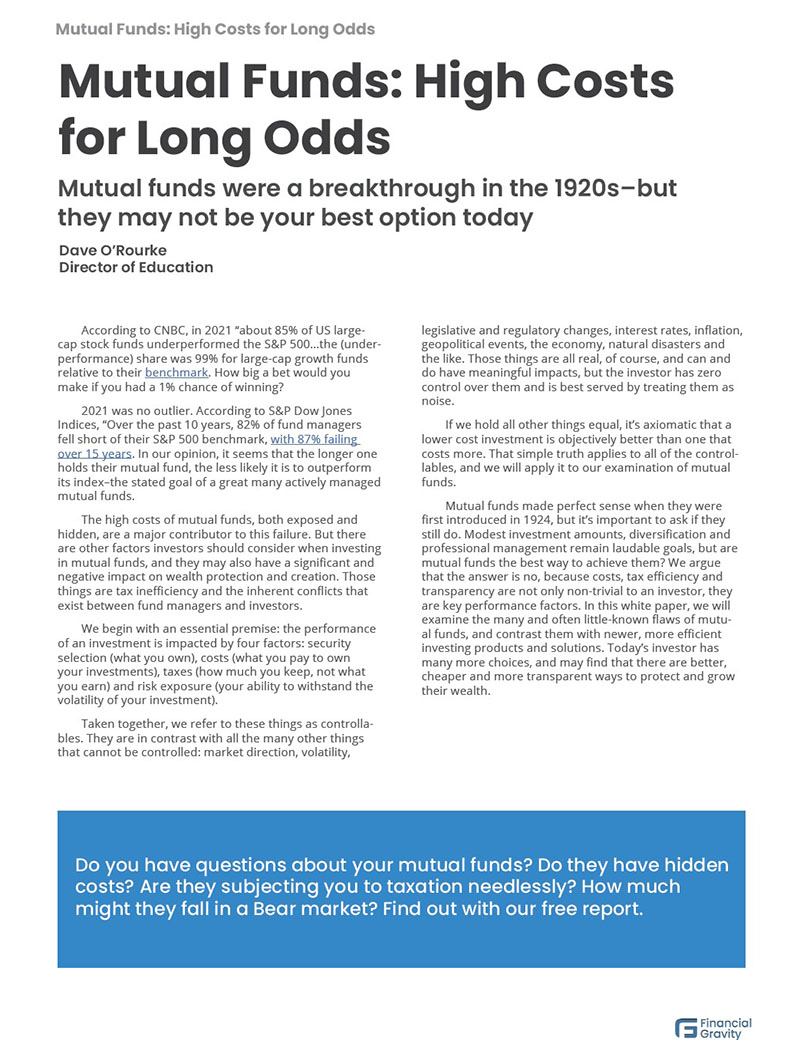Cambridge.org defines a “tech bro” as “someone, usually a man, who works in the digital technology industry, especially in the United States, and is sometimes thought to not have good social skills and to be too confident about their own ability.” Tech bros have been playing an increasingly large role in American life, venturing far beyond bits and bytes to make an impact on American society and culture.
Tech bros often draw controversy to themselves, which we suspect is a feature, not a bug, of their personalities. This is pretty clearly demonstrated by the incoming administration’s DOGE project, which will be headed by two of the biggest tech bros of all. There is another tech bro, one of the originals, who is also not free from controversy but has demonstrated a real gift for spotting emerging trends: Peter Thiel.
Our blogs are not political—ever. We focus on the concerns, behaviors, and success factors of investors, and this is where Thiel comes in. Here is the one most fascinating thing about Thiel from an investor’s point of view: Peter Thiel, a multi-billionaire, will probably never pay income tax again.
Thiel was a co-founder of PayPal, the online payments giant with a market cap near $90 billion. He founded Palantir, the military/industrial database company, now worth about $180 billion. Most notably, Thiel acquired 10.2% of Facebook in 2004 for $500,000. Facebook, now known as Meta, has a current market cap of about $1.5 trillion. So, yes, we have to say that Peter Thiel is pretty good at investing.
Anatomy of a Brilliant Strategy
Thiel is obviously good at recognizing opportunities, and he saw a big one in 1999, when he used less than $2,000 in his Roth IRA to acquire his initial stake in PayPal at just a fraction of a penny per share. In 2002, eBay acquired PayPal for the equivalent of $1.5 billion. The return on Thiel’s investment was astronomical, but because of the Roth, he will never pay taxes on those gains, and neither will his heirs if he and they follow the withdrawal rules.
By continuing to use his Roth to acquire low-basis stock in early-stage companies, Thiel’s account grew to over $5 billion, about one-third of his reported $14.8 billion net worth. For practical purposes, a person could never spend $5 billion, particularly someone like Thiel, who continues to create wealth in his brilliant investor career.
Roth rules apply to everyone, and a Roth account may be a great way to grow, shelter, spend, and pass along wealth. It’s a pretty simple formula: fund your Roth with after-tax dollars, and all the growth will accumulate tax-free. There are withdrawal rules and contribution rules, but what Thiel did was perfectly ethical and legal.
One Step Back, Many Steps Forward
Any investor of virtually any size can benefit from using legal tax breaks and smart strategies to defer or avoid taxes for themselves and even for their heirs. You don’t necessarily need access to the founder’s stock with exponential potential to benefit from tax-free compounding and withdrawals, and you’re not limited to annual contribution limits if you use a technique called a Roth conversion.
A Roth conversion is a process by which an investor can transfer assets from a qualified account, like a Traditional IRA or a 401(k), into a Roth IRA. The transferred amounts will be treated as taxable income, so careful planning is critical to the success of the strategy. Think of this as taking a big step backward to take many small steps forward, ideally for many years.
A Roth conversion won’t pencil out for many people, but it can be a very smart move for millions of American families. There are some very important things to consider:
The timing of your conversion is hugely important. If you can arrange things so that your income is lower than usual in a given year (the lower, the better), the conversion works more efficiently. If you own your own business, you can use careful planning to reduce your personal income from the business equal to the amount you choose to transfer. You can make as many transfers over as many years as you like, subject to some liquidity constraints.
You will want to use funds to pay the income tax from non-qualified accounts. The whole point of the exercise is to maximize the amount of tax-free compounding, meaning the money in the Roth.
If you cannot legally manipulate your income year to year, you should take care not to let the converted amount push you into a higher tax bracket. Following this logic, conversions work best before you elect to take Social Security benefits, 85% of which are taxable as income. Note also that the higher income may affect your Medicare Part B and Part D premiums.
Critics of tech bros in general and Thiel in particular will argue that Thiel unfairly exploited the tax law and that Roth IRAs were intended to help modest income earners save for retirement. A sharp tax lawyer may say, “What does this word ‘unfair’ mean?” and they’d have a point. All of that might be fodder for podcasts like All In, but it won’t change the fact that a Roth conversion is worth looking into for you.








